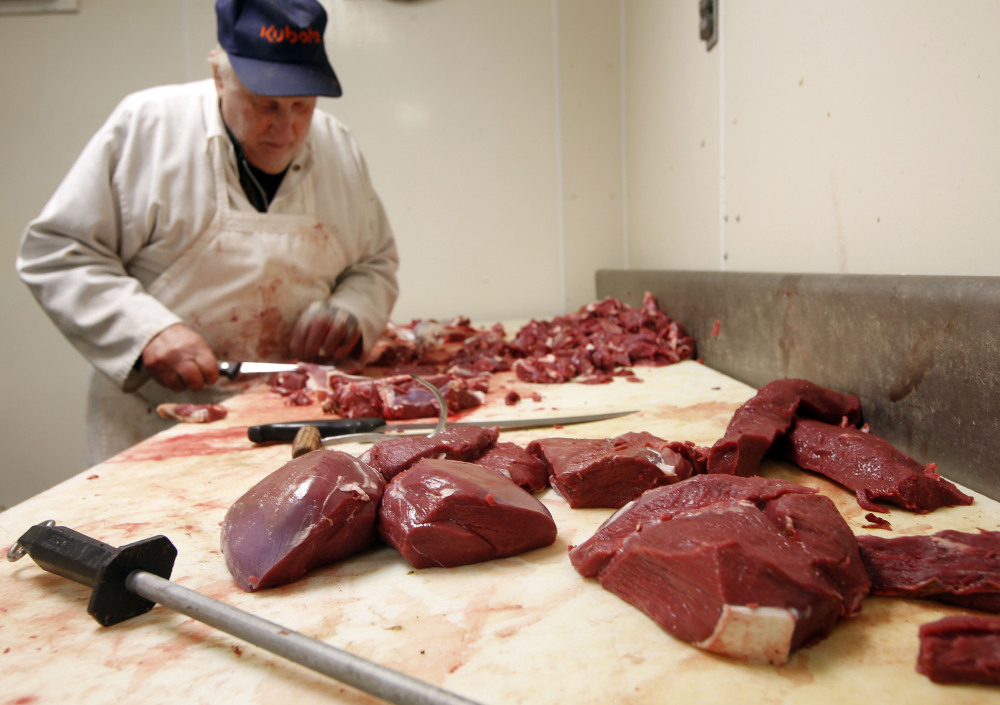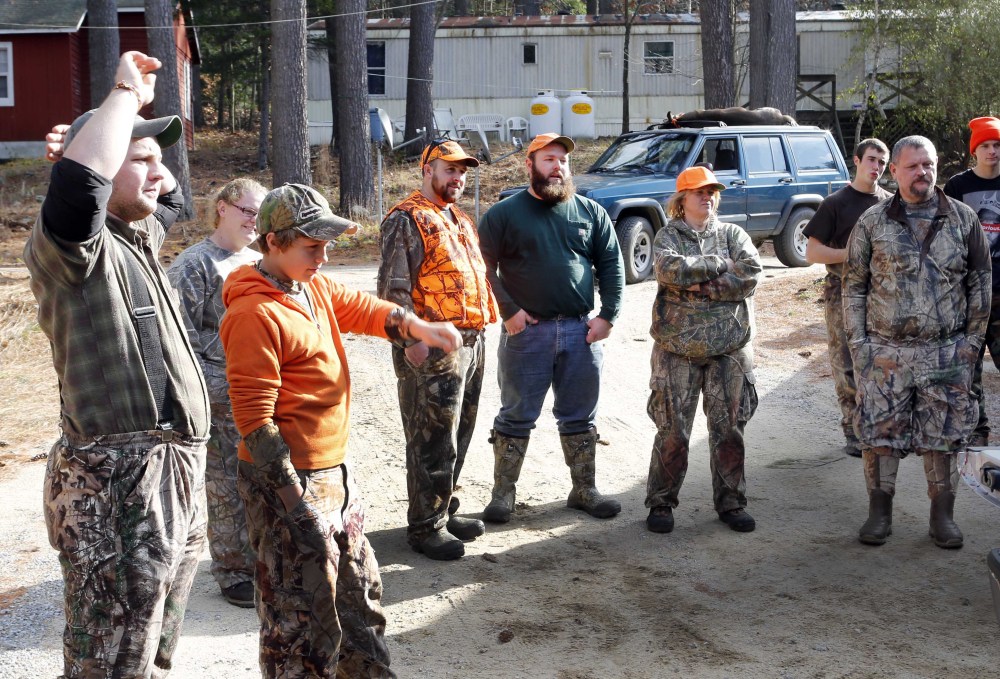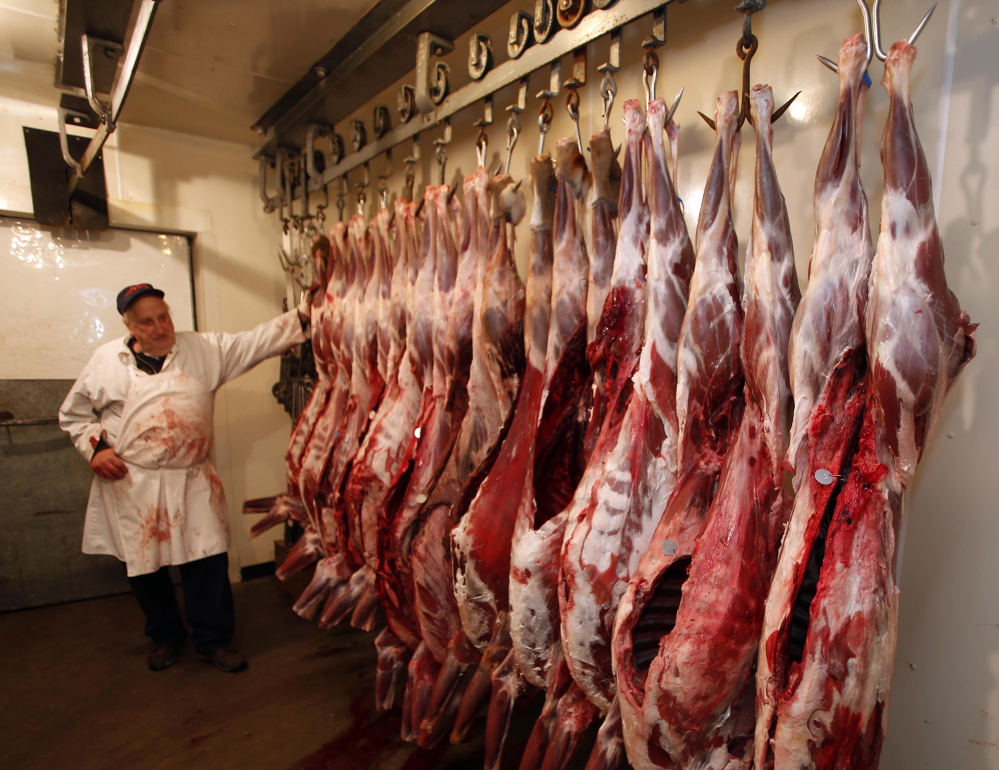MONTPELIER, Vt. – A decades-long national decline in the number of hunters has prompted states to tap into a new group of hunters – people who demand locally produced food, but don’t know the first thing about bagging a deer.
Books and blogs on the topic are numerous, and state wildlife departments are offering introductory deer hunting classes in urban areas to recruit newbies who want to kill their own local, sustainable and wild meat in what some say is an ecologically friendly way.
“It’s not easy and it’s not a surefire way to fill a freezer every year but it’s certainly more rewarding than even raising a cow behind your house and butchering it,” said Chris Saunders, hunter education coordinator for the Vermont Department of Fish and Wildlife. The department offered an introductory deer hunting course in Burlington this fall to recruit new hunters.
The number of people holding hunting licenses nationally had dropped over the last 30 years starting in 1983, mostly because of changes in demographics, such as an aging population and more people moving into urban areas, said Mark Damian Duda, executive director of Virginia-based Responsive Management, which does surveys for federal and state fish and wildlife departments.
But hunting participation increased by 9 percent from 2006 to 2011, the latest U.S. Fish and Wildlife Service’s national five-year survey found, and wildlife officials around the country suspect that it’s local food connoisseurs – or locavores – partly helping to level it off.
Reasons for hunting vary – recreation, spending time with friends and family, finding a trophy buck. The number of those hunting for meat nearly doubled from 16 percent in 2006 to 35 percent in 2011, according to a national survey of 1,000 hunters published last year by Responsive Management and other outdoors agencies. The survey found that part of the increase was driven by the locavore movement.
That’s why graduate student Francis Eanes, 27, enrolled in an introductory hunting course this summer and fall in Madison, Wisconsin.
“The motivation really was something that I can do for myself as a way of knowing where my food comes from,” he said. “I’ve worked on farms for a number of years and enjoy picking and helping grow some of my own produce and it seemed like a natural extension to apply that to at least some of the meat that I eat.”
He’s slaughtered pasture-raised rabbits and chickens, and said he feels at ease about killing a deer since it’s able to roam free and grow in a natural habitat. With a clean shot, the deer dies quickly, Eanes said.
“It’s definitely easier to pull carrots or pick tomatoes, but I’m fairly confident that if an opportunity were to present itself, I’d be able to take the shot,” said Eanes, who plans to get a deer during the state’s rifle season, which started Saturday.
Success isn’t guaranteed. Saunders told his hunting class – where meat was the No. 1 motivation for the attendees – that the success rate of hunters is between 15 and 18 percent.
But for many new hunters, it goes beyond knowing where your food comes from.
They enjoy the outdoors, the skill and the unknown – and there’s no negative ecological footprint, said Tovah Cerulli, author of “A Mindful Carnivore.” The 34-year-old former vegetarian and vegan turned hunter wrote his master’s thesis on what he calls adult-onset hunting.
Deer are part of the forest where he lives in Marshfield, Vermont, he said, and if he gets one, he shares it with friends and family. The frozen meat tends to last him and his wife an entire year.
The experience of taking a piece of venison that he shot and butchered out of the freezer is more satisfying than taking out store-bought food out to cook.
“There’s such a specific and direct connection to where that came from and I know that individual animal, where it was, exactly when I killed it,” he said. “It’s all very specific and direct and personal.”
Send questions/comments to the editors.




